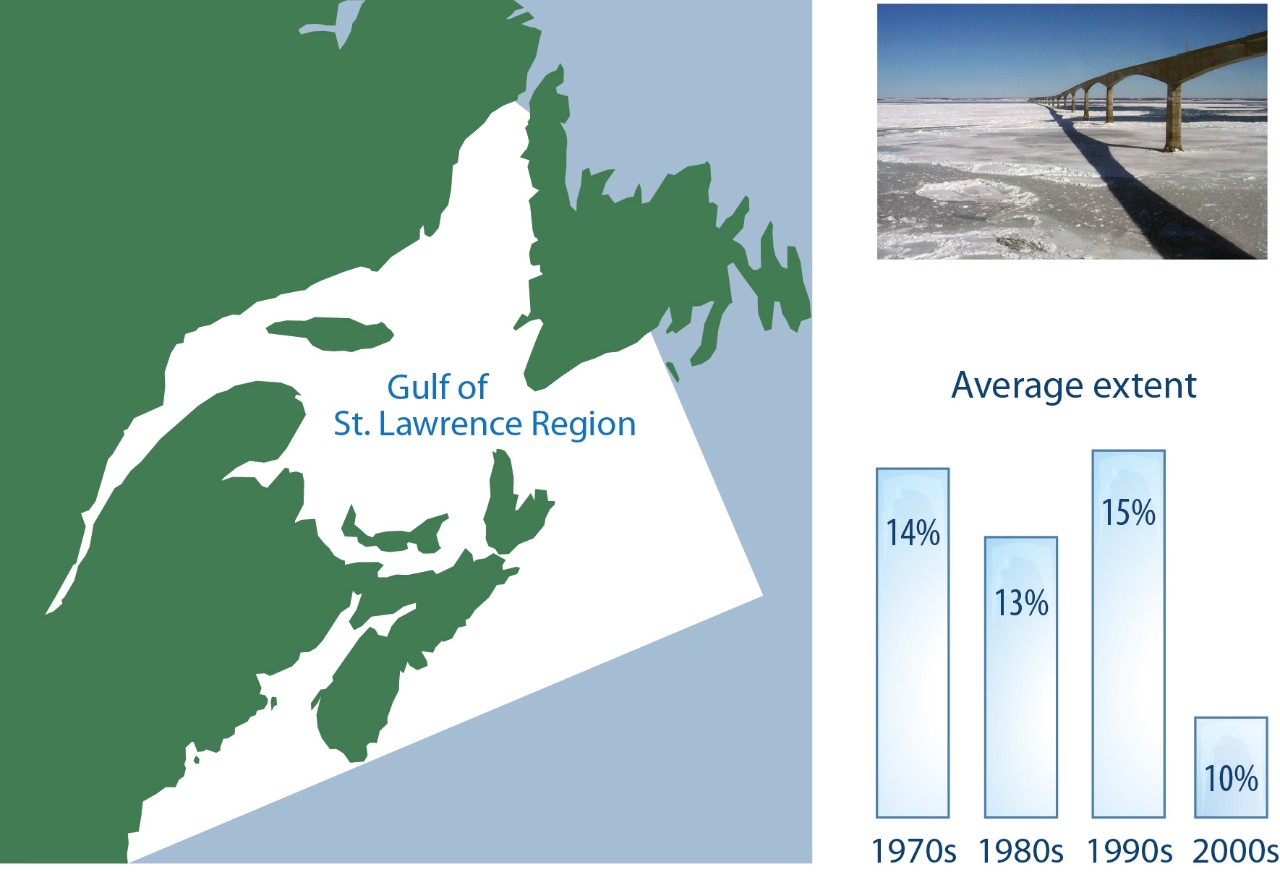In the 2000s, the area of ice coverage in the Gulf of St. Lawrence was generally less than the 30-year 1971-2000 average. It was also more variable from year to year than it was during the 1971-2000 period. For example, the below-normal ice cover in the winter of 2001-2002 was followed by an above-normal ice cover year, which was then followed by below normal ice cover the next winter. The 2009-2010 winter season had less ice than any other year in the Canadian Ice Service ice chart record spanning 1968-2010. Ice cover extent is decreasing, and becoming more variable from year to year.
Seasonal ice coverage is affected by weather (temperature, wind, and pressure) and oceanographic factors (tides, currents, and underwater landscape).

